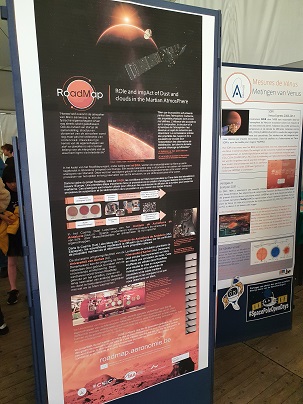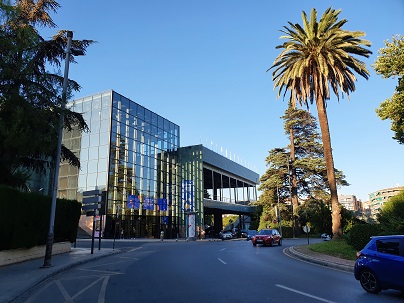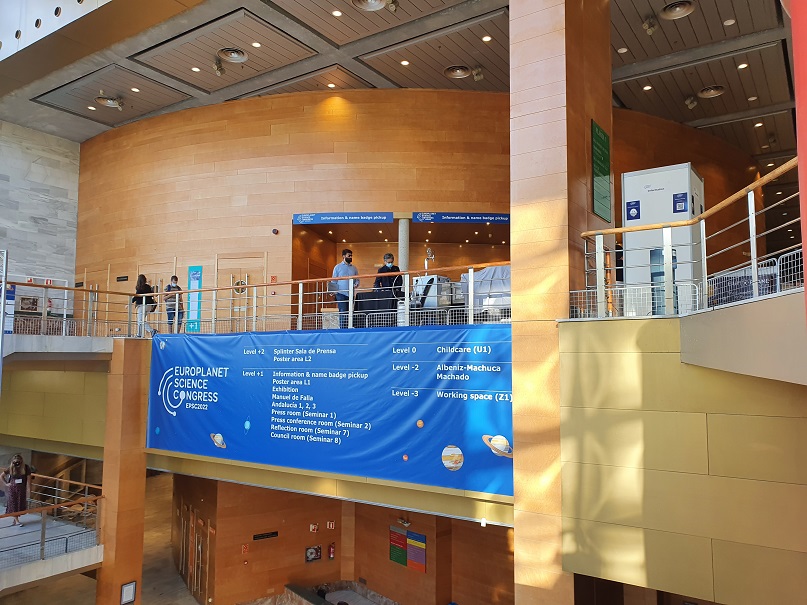24-25/10/2022
The RoadMap project had a poster at the BIRA-IASB Open Doors during the weekend of 24-25 October.
 |
23/09/2022
Several members of the RoadMap project were actively participating to the Europlanet EPSC conference.
Dr. Arianna Piccialli organized several sessions of Planetary Science Wiki edit-a-thon throughout the week.
She co-organized also the Diversity Round Table .
Dr. Nigel Mason (President of the Europlanet Society) and Dr. Ann Carine Vandaele (President Elect of the Europlanet Society) presented the objectives of the Europlant Society and introduced the recent developments in its structure during the morning briefing on Thursday 22 September.
19/09/2022
RoadMap partners were presenting their science and results at the Europlanet Science Congress held in Granada, Spain from 18 to 23 Septembre 2022.
 |
 |
23-09-2022
Several partners of the RoadMap H2020 project were attending the EPSC Conference. A dedicated session, "Martian dust and clouds: from lab to space", organized by the project's main partners was held with a poster session on Maonday and oral sessions on Tuesday and Wednesday.
The aim of this session was to bring together scientists involved in modelling and observing Martian dust and clouds, from the lab to the analysis of space data. We will consider presentations on observations, field and laboratory experiments covering different aspects of dust and clouds, such as aeolian processes, dust lifting, sedimentation, scavenging, nucleation, aggregation, optical properties including scattering characterization, etc, but also on modeling of these processes from the perspective of implementation in radiative transfer codes or Global Circulation models.
30-09-2022
A new animated video has been developed in order to present the roles of the different partners of the RoadMap research project to the public. *English/Dutch/ French dubtitles available*
RoadMap: How do we study Mars in a lab?
Page 3 of 7


